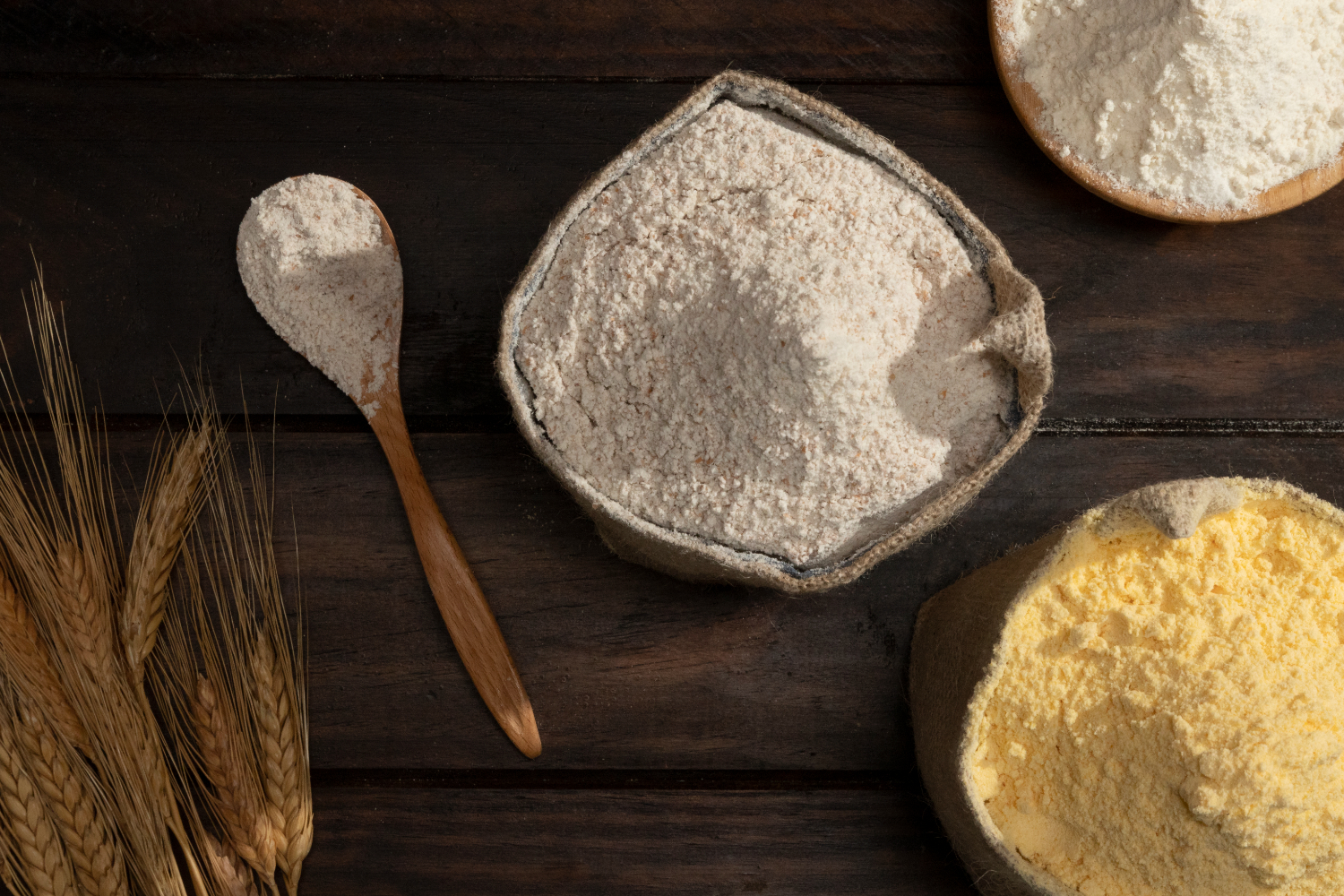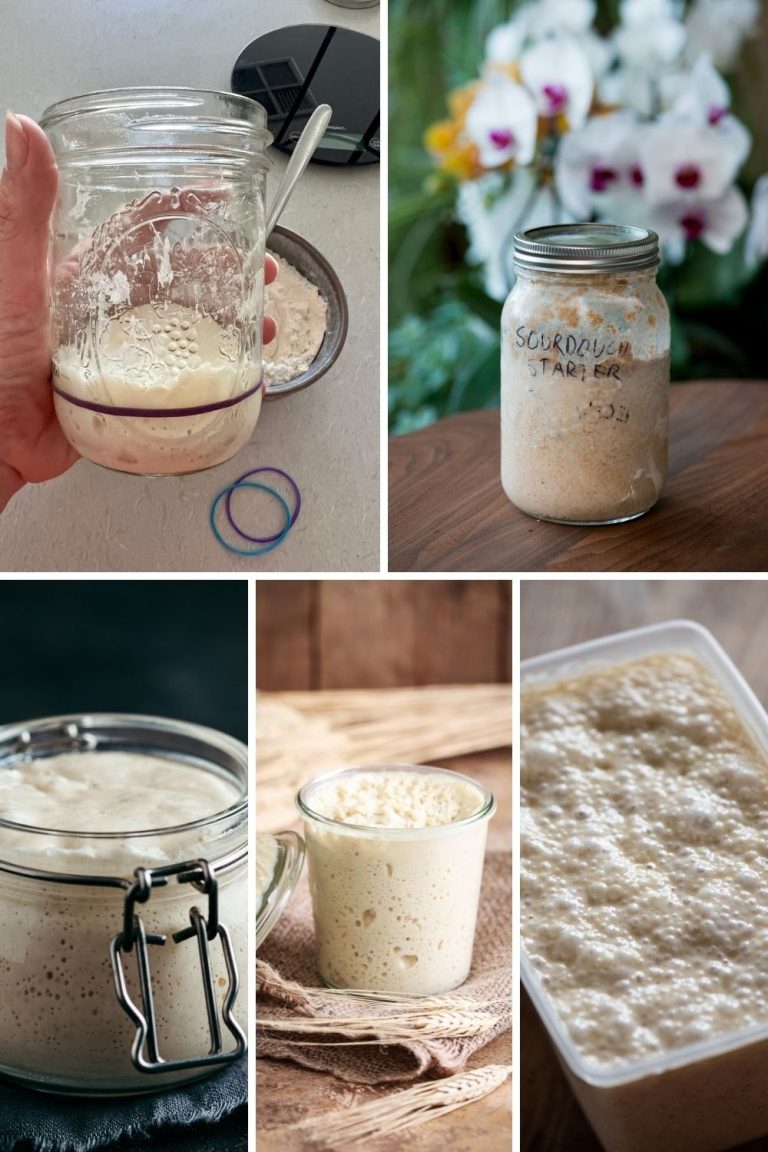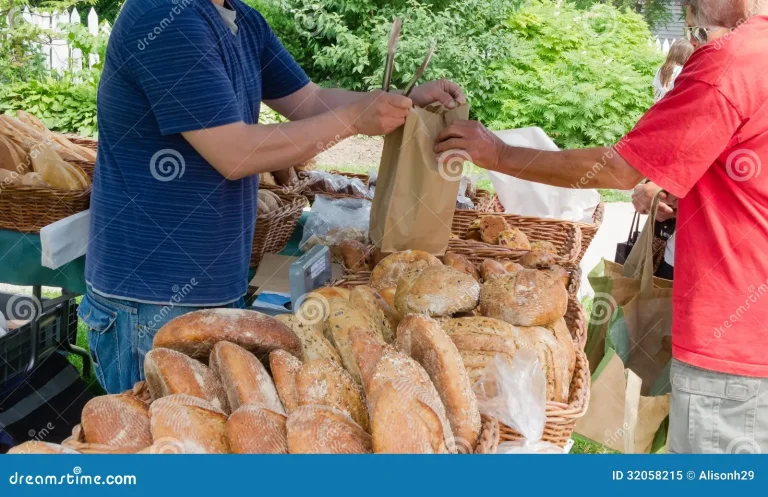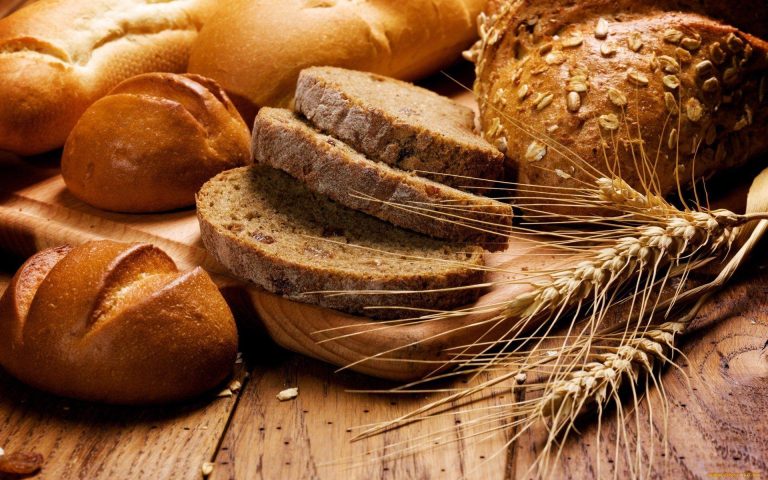10 Best Gluten-Free Flour Alternatives for Perfect Sourdough
We’re Thrilled to Share Our Game-Changing Discovery – Perfect Sourdough Without Wheat Flour!
Traditional sourdough enthusiasts might raise an eyebrow, but we’ve cracked the code to creating that perfect crusty loaf with a tender, tangy crumb – all without a speck of gluten. Our test kitchen has been buzzing with excitement as we’ve perfected these revolutionary gluten-free techniques.
Ready to transform your gluten-free baking journey? Through countless hours of testing and experimenting, we’ve mastered the art of gluten-free sourdough fermentation. The secret lies in understanding how each alternative flour behaves during the fermentation process, creating that distinctive sourdough magic we all crave.
From protein-packed buckwheat to our beloved brown rice flour, we’ll guide you through our top 10 proven alternatives that deliver exceptional results. Whether you’re navigating celiac disease or simply exploring healthier options, these carefully tested flour choices will help you create artisanal loaves that rival traditional wheat-based sourdough. Trust us – even the most dedicated wheat sourdough enthusiasts won’t believe these loaves are gluten-free!
Buckwheat Flour

Image Source: ScienceDirect.com
Buckwheat flour stands tall as our star performer in gluten-free sourdough baking. Don’t let the name fool you – this remarkable pseudocereal brings naturally gluten-free goodness to your kitchen.
Buckwheat Flour Properties
The magic of buckwheat lies in its distinctive personality – picture an earthy, nutty flavor dancing with unique gray-to-dark hues that transform ordinary bread into extraordinary creations. Our test kitchen discoveries reveal these remarkable qualities:
- Rich in essential amino acids and proteins
- High in antioxidants and bioactive compounds
- Packed with potassium, magnesium, and zinc
- Naturally low to medium on the glycemic index
Buckwheat Flour Fermentation Benefits
Our sourdough journey unveiled buckwheat’s unique fermentation character. Unlike its gluten-free cousins, buckwheat starters prefer to show off their personality through delicate, smaller bubbles. Patience becomes your best friend here – expect 10-14 days for stable starter activity.
The true beauty emerges during fermentation, where nature’s chemistry transforms buckwheat into a nutritional powerhouse. Watch as beneficial bacteria enhance nutrient availability and digestibility, while boosting essential amino acids, especially lysine.
Buckwheat Flour Mixing Ratios
Through countless test loaves, we’ve cracked the code for perfect ratios:
| Purpose | Buckwheat % | Other Flours | Notes |
|---|---|---|---|
| Starter | 50% | 50% rice flour | Best stability |
| Bread | 5-10% | 90-95% other GF flours | Optimal flavor |
Here’s our baker’s secret – start small with buckwheat percentages. We learned the hard way that exceeding 10% can overpower your dough structure and intensify bitter notes. For consistently beautiful loaves, pair buckwheat with sweet rice flour or your favorite gluten-free blend.
The journey with buckwheat flour demands patience, but trust us – your reward awaits in every slice of distinctive sourdough, complete with that perfectly soft crumb and delectable crust.
Brown Rice Flour

Image Source: Little Spoon Farm
Brown rice flour stands as our trusted companion in gluten-free sourdough adventures. Time and time again, this versatile flour proves itself as the perfect foundation for creating exceptional gluten-free loaves.
Brown Rice Flour Characteristics
The secret to brown rice flour’s success lies in its particle size. Our test kitchen discoveries reveal that medium-sized particles create bread with superior volume and those beautiful, uniform gas cells we all dream about. Here’s what makes this flour truly special:
- Higher fiber content than its white rice cousin
- Abundant vitamins E and B compounds
- Packed with essential minerals and antioxidants
- Delivers 77.5g carbohydrates per 100g
Brown Rice Flour Starter Tips
Ready to master your starter? Our countless trials have perfected this technique. Feed your starter with 100% brown rice flour for two weeks until it shows that beautiful double-rise action. Remember – consistency is key. We’re looking for that perfect thick paste that stays put in your jar.
Our baker’s proven schedule:
- Remove half the starter
- Add 100-125g water
- Mix in 100-115g brown rice flour
Brown Rice Flour Combinations
The true artistry comes in creating the perfect blend. Our test kitchen’s favorite ratio delivers exceptional results:
| Flour Type | Percentage | Purpose |
|---|---|---|
| Brown Rice | 50% | Base flour |
| Sorghum/Millet | 30% | Structure |
| Buckwheat/Teff | 20% | Flavor enhancement |
New to gluten-free sourdough? Start with our foolproof 50:50 blend – equal parts brown rice flour and your chosen gluten-free flour mix. This combination consistently delivers that perfect balance of structure and fermentation magic.
Here’s a baker’s secret – home-milled brown rice flour tends to show more vigor right from the start. Store-bought varieties might need a touch more water to achieve that ideal thick, pasty consistency that captures those precious fermentation bubbles.
Sorghum Flour

Image Source: ScienceDirect.com
Ready to unlock the ancient secrets of exceptional bread? Sorghum flour stands as our cherished treasure in gluten-free sourdough crafting. This time-honored grain, carrying centuries of wisdom from Asia and Africa, delivers a gentle sweetness that transforms ordinary bread into artisanal masterpieces.
Sorghum Flour Benefits
Our test kitchen bubbles with excitement over sorghum’s remarkable nutritional profile. Each batch reveals nature’s bounty:
- Bursting with vitamin B, magnesium, phosphorus, potassium
- A goldmine of iron and zinc
- Protein and dietary fiber powerhouse
- Naturally gluten-free and celiac-friendly
Sorghum Flour Fermentation Guide
We’ve cracked the code for perfect sorghum fermentation! The sweet spot lies between 75-82°F (24-28°C). Here’s a baker’s truth – while sorghum starters might not double like their wheat cousins, they’re quietly working their magic to create extraordinary bread!
Our proven fermentation roadmap:
| Stage | Temperature | Time |
|---|---|---|
| Bulk Fermentation | 68°F (20°C) | 2 hours |
| Proofing | 72-74°F | 1-2 hours |
Sorghum Flour Best Practices
Through countless trials and delicious triumphs, we’ve mastered the art of sorghum sourdough. The game-changer? Pairing it with psyllium husk creates that perfect gluten-like texture we all crave. Trust us on this one – organic sorghum flour consistently delivers superior results.
Starting your sorghum journey? Begin with our foolproof 1:1:1 ratio after day three. Keep that jar rim spotless and treat your starter to a fresh, sterilized home weekly – it’s the secret to preventing unwanted visitors.
The true magic happens when sorghum joins forces with other gluten-free flours. Science backs our kitchen discoveries – sorghum bran enhances nutrition without sacrificing flavor. The proof is in the proofing – taste tests show bread with 14.2% sumac sorghum bran matching traditional loaves bite for bite!
Teff Flour

Image Source: Bob’s Red Mill
Ready to discover Ethiopia’s ancient grain secret? Our gluten-free sourdough journey reaches new heights with teff flour, nature’s tiny powerhouse that’s revolutionizing artisanal baking.
Teff Flour Nutrition
The numbers tell an extraordinary story! Each 100g delivers an impressive 13.3g of protein and 8g of dietary fiber. But here’s what truly makes our baker’s hearts sing – a remarkable 7.63mg of iron and 180mg of calcium per 100g. The secret to its gentle digestion? A perfect harmony of amino acids and slow-digestible starch, keeping that glycemic index beautifully low.
Teff Flour Sourdough Tips
Our test kitchen discoveries reveal teff’s unique personality during fermentation:
- Watch in amazement as fermentation speeds past other gluten-free flours
- Dark teff races ahead of ivory in fermentation speed
- The sweet spot? A precise 21°C (71-72°F)
Teff Flour Mixing Guidelines
Through countless test loaves, we’ve perfected these golden ratios:
| Purpose | Teff Amount | Additional Ingredients |
|---|---|---|
| Starter | 10g starter | 30g water, 35g flour mix |
| Bread Mix | 21% teff | 79% other GF flours |
Here’s our baker’s secret – pair teff with chestnut flour for an enchanting sweet-fruity symphony. Add psyllium husk for structure, but remember – a gentle hand prevents limiting that beautiful rise.
The true magic happens in the aroma – fruity notes dance with toasty undertones, creating a cereal symphony. Our sourdough cultures thrive with teff, producing those coveted lactic acid aromas that make each loaf irresistible.
Quality matters! Store your teff flour with care – we’ve learned that premium ingredients create premium results. Yes, teff commands a higher price, but trust us – every cent invested returns tenfold in nutrition and unmatched baking excellence.
Quinoa Flour

Image Source: ScienceDirect.com
Meet the crowned jewel of gluten-free sourdough – quinoa flour! With an impressive 14.1% protein content and 10.3% dietary fiber, this powerhouse flour rises above the rest in our gluten-free pantry.
Quinoa Flour Properties
Nature’s gift to gluten-free baking brings structure and strength to every loaf. Our test kitchen marvels at these exceptional qualities:
- Powerful enzyme activity driving robust fermentation
- Protein-packed structure rivaling traditional gluten
- Earth-kissed flavor enhancing sourdough’s signature tang
- Mineral-rich profile for superior nutrition
Quinoa Flour Fermentation Process
Think of quinoa as the “rye of the gluten-free world” – watching it ferment feels like witnessing kitchen magic! Our starters mature with remarkable speed and vigor compared to other gluten-free alternatives.
Our proven path to fermentation success:
| Day | Process | Temperature |
|---|---|---|
| 1-3 | Regular feeding at room temp | 65-75°F |
| 4-5 | Cold ferment period | 40-45°F |
| 6-7 | Return to room temp feeding | 65-75°F |
Quinoa Flour Usage Tips
Here’s our baker’s secret – transform quinoa’s natural bitterness into golden glory! Toast at 215°F for 2½ to 3 hours, and watch it blossom into nutty, graham cracker notes perfect for sourdough artistry.
Properly toasted quinoa flour stays fresh up to 8 months in cold storage. For your sourdough symphony, we recommend:
- 20% quinoa flour to orchestrate flavor and fermentation
- 80% other gluten-free flours to build structure
The true magic? Quinoa flour keeps your microbial activity in your starter dancing even through winter’s chill. This remarkable quality ensures your gluten-free culture stays vibrant year-round, ready to create perfect loaves in any season.
Amaranth Flour

Image Source: Breadtopia
We’re Passionate About This Protein Powerhouse! Amaranth flour, nature’s ancient pseudo-grain, transforms ordinary gluten-free sourdough into extraordinary artisanal creations. Our test kitchen discoveries reveal this remarkable flour’s dual talents – extending shelf-life while crafting unforgettable flavor symphonies.
Amaranth Flour Benefits
The numbers tell an extraordinary story about amaranth’s exceptional profile. Each cup delivers a whopping 20% of your daily protein needs, alongside nature’s treasure chest of folate, B6, manganese, magnesium, iron, and selenium. Watch the magic unfold as amaranth:
- Naturally preserves your bread’s freshness
- Amplifies protein and free amino acid levels
- Masters water and oil absorption
- Elevates your bread’s nutritional symphony
Amaranth Flour Starter Guide
Our hearts skip a beat watching amaranth starters spring to life – they’re simply unmatched in reliability and vigor. Trust our proven formula:
| Stage | Ratio | Temperature |
|---|---|---|
| Initial Mix | 1:2:3 (starter:water:flour) | Room temp |
| Feeding | 120g starter – 240g water – 345g flour blend | 68-72°F |
Amaranth Flour Combinations
The true artistry lies in perfect partnerships. Picture corn’s sweetness dancing with fresh grass notes – that’s amaranth’s signature! Our golden ratio? A careful 20% amaranth flour in your blend.
Here’s where creativity blooms – amaranth plays beautifully with honey’s sweetness, nuts’ richness, and even earthy mushrooms. That subtle leafy undertone? Perfect with olive oil and sun-ripened tomatoes, or simply crowned with melting butter.
Don’t let amaranth’s bold personality intimidate you. We’ve watched countless traditional sourdough devotees fall in love with its distinctive character. This flour doesn’t just bake bread – it crafts nutritious, flavorful masterpieces that elevate your gluten-free sourdough journey to artisanal heights.
Millet Flour

Image Source: ScienceDirect.com
Ready to discover the gentle giant of gluten-free grains? Our years of sourdough crafting reveal millet flour as the perfect gateway to gluten-free baking mastery. This ancient grain whispers sweet, subtle notes that welcome newcomers and delight seasoned bakers alike.
Millet Flour Characteristics
Numbers don’t lie – our test kitchen celebrates millet’s impressive 11g of protein per 100g. Here’s what makes our hearts sing about millet flour:
- Sweet corn-like symphony in every bite
- Fermentation magic enhances digestibility
- Nature’s mineral and nutrient treasure chest
- Perfect partnership with psyllium husk for superior binding
Millet Flour Fermentation Tips
The dance of temperature and time creates perfect millet sourdough! At 20°C (68°F), watch the bulk fermentation work its 2-hour magic. Our proven rhythm:
| Stage | Temperature | Duration |
|---|---|---|
| Initial Proof | 20°C/68°F | 2 hours [304] |
| Final Proof | 22°C/72°F | 1 hour |
Millet Flour Best Practices
Trust our test kitchen wisdom – millet shines brightest in harmony with other gluten-free flours. Keep millet to 15-20% of your recipe, or risk that tell-tale mealy texture.
Our fresh-keeping secrets:
- Room temperature haven for 3 days
- Freezer sanctuary for 3 months
- Airtight fortress for optimal storage
The true excitement? Watching millet dance with brown rice, buckwheat, and chickpea flour. Here’s our perfect loaf secret – 450°F/235°C oven with steam’s gentle kiss creates that heavenly crispy crust embracing a cloud-soft crumb.
Don’t fear that vinegar-like aroma during fermentation – it’s nature’s way of saying your starter’s alive and thriving! We’ve watched countless aromatic beginnings blossom into perfect loaves.
Chickpea Flour

Image Source: Hearthwilde
We’re Passionate About This Mediterranean Marvel! Our gluten-free journey reached new heights when chickpea flour waltzed into our test kitchen. This remarkable flour doesn’t just bake bread – it creates nutritional masterpieces with enhanced technological and functional properties.
Chickpea Flour Properties
Ready to unlock nature’s protein vault? Our test kitchen discoveries reveal chickpea flour’s extraordinary gifts:
- Protein and fiber abundance that’ll make your heart sing
- Nature’s medicine cabinet of vitamins and minerals
- Powerful health-protective properties for heart and body
- Superior dough stability that rivals wheat flour
Chickpea Flour Starter Guide
Trust our countless hours of experimentation – we’ve cracked the code for perfect chickpea starters! Think pancake batter consistency and watch the magic unfold. Here’s your roadmap to starter success:
| Day | Observations | Action Required |
|---|---|---|
| 1-2 | Initial bubbling | Regular feeding |
| 3-4 | Hummus-like aroma | Ready to use |
| 4+ | Stable activity | Maintenance feeding |
Chickpea Flour Mixing Ratios
The golden number? 12% chickpea flour in your total mix. Here’s our baker’s secret for perfect results:
- Starter Build: Think sticky symphony – not too wet, not too dry
- Preferment: Let overnight magic enhance flavor and digestibility
- Final Dough: Dance with other gluten-free flours for texture perfection
What makes our hearts skip a beat? Watching chickpea flour strengthen dough stability while keeping that glycemic response in check. The reward? A creamy-nutty masterpiece that begs for a sprinkle of toasted sesame.
Begin your chickpea journey with store-bought flour – it’s your reliable partner for consistent absorption. Remember, these flours can be thirstier than their home-milled cousins, so adjust your water like a master baker!
Tapioca Flour

Image Source: Homestead and Chill
Wonder what gives our gluten-free sourdough that perfect chew? Tapioca flour stands as our master binder, transforming cassava root into bread-making magic.
Tapioca Flour Benefits
Our test kitchen discoveries reveal tapioca’s extraordinary talents:
- Creates that irresistible chewy bounce
- Masters the art of golden-brown crusts
- Binds ingredients like nature’s glue
- Guards precious moisture retention
- Clever reducer – 25% less sugar and fat needed
Tapioca Flour Usage Guide
The secret lies in perfect proportions – trust our proven formula of 1/3 tapioca starch for grain-free sourdough mastery. Watch in amazement as this flour drinks up liquid, especially when warmed with gentle stirring.
Our golden ratios for success:
| Purpose | Tapioca % | Other Flours | Notes |
|---|---|---|---|
| Starter | 25% | 75% other GF flours | For stability |
| Bread | 33% | 67% other GF flours | For structure |
Tapioca Flour Combinations
Here’s where artistry meets science! Brown rice flour becomes tapioca’s perfect dance partner, creating texture harmony. Our signature blend? One part tapioca flour waltzing with two parts other gluten-free flours.
Watch tapioca transform your baking:
- Pizza crusts that actually crackle
- Cloud-soft gluten-free cookies
- Bread that stays fresh longer
- Perfectly set pie fillings
Ready for a baker’s secret? Start with a cold liquid slurry to banish those pesky lumps. Remember – gentle heat preserves tapioca’s binding magic; high temperatures can break the spell.
Pro Tip: Create structure supremacy by uniting tapioca with psyllium husks and xanthan gum. This power trio delivers gluten-free perfection!
Sweet Rice Flour
Image Source: Facebook
We’re Passionate About Sweet Rice Flour’s Secret Powers! Don’t let the “glutinous” in its name fool you – this gluten-free wonder transforms ordinary sourdough into extraordinary artisanal masterpieces.
Sweet Rice Flour Properties
Science meets magic in sweet rice flour’s unique composition – nearly 100% amylopectin creates bread that dances between tender and chewy. Our test kitchen revelations showcase:
- Moisture-locking mastery
- Bond-building brilliance
- Nature’s freshness keeper
- Silky-smooth perfection in every mix
Sweet Rice Flour Applications
Watch your starter spring to life with sweet rice flour’s special touch! Our proven formula for success:
| Purpose | Sweet Rice % | Companion Flour | Result |
|---|---|---|---|
| Starter | 50% | Brown Rice/Buckwheat | Strong activity |
| Bread | 20-30% | Mixed GF flours | Optimal texture |
Here’s where the magic happens – properly hydrated sweet rice flour creates that elusive gluten-like chewiness. The perfect dance partners? White and brown rice flour, creating structure symphonies in every loaf.
Sweet Rice Flour Best Practices
Through countless triumphs (and yes, some entertaining failures), we’ve mastered these golden rules:
- Temperature Mastery: Boiling liquid transforms flour into silk-smooth gel
- Storage Secrets: Cool, dry sanctuary in airtight vessels
- Quality Quest: Superfine flour for cloud-light creations
The true excitement? Watching sweet rice flour elevate your bread’s structure while maintaining that precious moisture. Trust our discovery – the yudane method unleashes this flour’s full potential, creating velvet-smooth gels in moments.
Remember, while they share a name, sweet rice flour stands worlds apart from its regular rice flour cousin. This unique ingredient doesn’t just bake bread – it crafts gluten-free masterpieces with perfect crumb and extended freshness.
Comparison Table
Ready to master your gluten-free flour symphony? We’ve orchestrated this comprehensive guide to help you compose your perfect sourdough masterpiece!
Our test kitchen adventures have revealed the unique personality of each flour, from protein powerhouses to texture architects. Let this carefully crafted comparison be your roadmap to gluten-free success.
| Flour Type | Protein Content | Key Nutritional Benefits | Recommended Usage % | Primary Benefits in Sourdough | Storage/Handling Tips |
|---|---|---|---|---|---|
| Buckwheat | Not specified | Rich in amino acids, antioxidants, potassium, magnesium, zinc | 5-10% | Distinctive earthy flavor, enhanced nutrient bioavailability | Mix with 50% rice flour for starter |
| Brown Rice | Not specified | High fiber, vitamins E & B, minerals, antioxidants | 50% | Reliable performance, consistent results | Medium particle size works best |
| Sorghum | Not specified | Rich in vitamin B, magnesium, phosphorus, iron, zinc | Not specified | Slightly sweet flavor profile, excellent fermentation | Store in sterilized jar, optimal temp 75-82°F |
| Teff | 13.3g/100g | High in iron (7.63mg/100g), calcium (180mg/100g) | 21% | Shorter fermentation time, enhanced aroma | Best at 21°C (71-72°F) |
| Quinoa | 14.1% | High protein and dietary fiber (10.3%) | 20% | High enzyme activity, quick starter maturation | Toast at 215°F for 2½-3 hours to remove bitterness |
| Amaranth | 20% DV/cup | Rich in folate, B6, manganese, magnesium, iron | 20% | Extends shelf life, enhances protein content | Store at room temperature |
| Millet | 11g/100g | Rich in essential minerals | 15-20% | Sweet, corn-like flavor | Store at room temp for up to 3 days |
| Chickpea | Not specified | High in protein and dietary fiber | 12% | Enhanced dough stability, reduced glycemic response | Maintain starter like pancake batter consistency |
| Tapioca | Not specified | Low in nutrients but high in carbs | 25-33% | Excellent binding properties, promotes browning | Avoid high-temperature cooking |
| Sweet Rice | Not specified | High in amylopectin | 20-30% | Superior moisture retention, excellent binding | Store in airtight container in cool, dry place |
Think of this table as your gluten-free flour playlist – each ingredient brings its own notes to create your perfect sourdough symphony. Whether you’re seeking protein-packed performers like amaranth or binding virtuosos like tapioca, your perfect flour combination awaits!
Conclusion
Ready to Rise Beyond Traditional Boundaries? Our test kitchen journey through these ten gluten-free flours proves what once seemed impossible – extraordinary sourdough doesn’t need wheat to shine! From buckwheat’s earthy symphony to sweet rice flour’s binding magic, each alternative opens doors to exciting new possibilities.
We’ve Discovered The Dance of Perfect Proportions! Like conducting a masterful orchestra, success flows from understanding how these flours harmonize together. Our countless trials reveal the sweet spot – 20-30% specialty flour paired with complementary alternatives. Temperature, time, and proper storage become your rhythm section, keeping everything in perfect balance.
Here’s what truly makes our baker’s hearts sing – the unexpected nutritional treasures we uncovered along the way. Quinoa’s impressive 14.1% protein content and teff’s mineral-rich profile aren’t just numbers – they’re nature’s gifts for creating nourishing, digestible bread that feeds both body and soul.
Remember, every master baker started as a curious explorer. Start your journey with small batches, embrace the learning process, and let each loaf teach you something new. While these flours might seem temperamental at first, they’re simply waiting for your patient hand to unlock their full potential. Trust us – we’ve watched countless skeptics become true believers in the power of gluten-free sourdough artistry!
FAQs
Q1. What are the best gluten-free flours for sourdough bread? The top gluten-free flours for sourdough include buckwheat, brown rice, sorghum, teff, and quinoa. These flours offer unique flavors and nutritional benefits while providing good fermentation properties. For best results, combine them with starches like tapioca or arrowroot to improve texture.
Q2. How do I create a gluten-free sourdough starter? To create a gluten-free sourdough starter, use a combination of sweet rice flour and brown rice flour or a gluten-free all-purpose flour blend. Feed the starter regularly and maintain it at room temperature. It may take 3-7 days to develop a strong, active starter.
Q3. What are the nutritional benefits of using alternative flours in sourdough? Alternative flours like quinoa, amaranth, and teff are rich in protein, fiber, and essential minerals. They often have a lower glycemic index compared to wheat flour and can provide additional health benefits such as improved digestion and increased nutrient bioavailability through fermentation.
Q4. How do I adjust hydration levels when using gluten-free flours? Gluten-free flours often require different hydration levels compared to wheat flour. Start with a higher hydration ratio and adjust based on the flour’s absorption rate. For example, chickpea flour tends to absorb more water, while tapioca flour requires less. Experiment with small batches to find the right consistency.
Q5. Can I mix different gluten-free flours for better results? Yes, mixing different gluten-free flours often yields better results in sourdough baking. A common approach is to use about 20-30% of a specialty flour (like buckwheat or teff) combined with a base of brown rice flour and starches. This helps balance flavor, nutrition, and texture in the final loaf.







